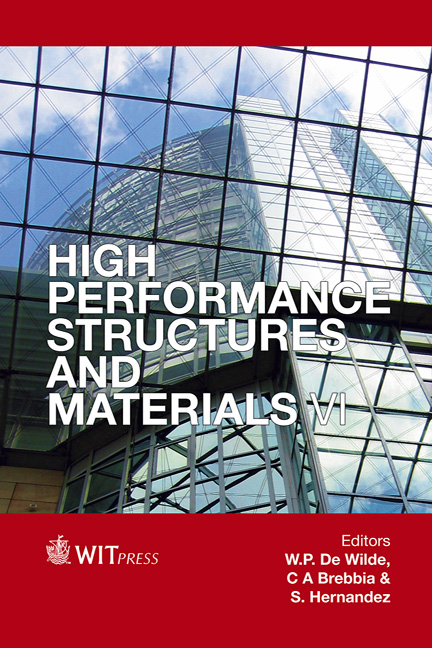Probing The Constitutive Behaviour Of An Al-Sn-Si Alloy By Tensile Testing And Instrumented Indentation
Price
Free (open access)
Transaction
Volume
124
Pages
13
Page Range
169 - 181
Published
2012
Size
823 kb
Paper DOI
10.2495/HPSM120151
Copyright
WIT Press
Author(s)
R. Schouwenaars, H. A. Durán, A. Bravo, V. H. Jacobo & A. Ortiz
Abstract
Al-Sn-Si alloys used in tribological applications present a composite microstructure consisting of the Al-matrix, Sn-grains and dispersed Si and intermetallic particles. Upon plastic deformation, compatibility strains at the matrix-particle interface produce an initial stage of pronounced work hardening, while cold-rolled samples show partial recovery at room temperature which reduces the yield strength. Both phenomena lead to anomalous hardening. Ascast thin slabs of Al-13%Sn-2.5%Si-1%Cu were cold rolled and annealed at 300°C for 60 min. Tensile tests were performed along the rolling direction and micro-indentation tests executed along the normal, transverse and rolling direction. Tensile curves were fitted by several conventional hardening relations, of which the Voce-relationship provided the best flexibility in dealing with the non-standard hardening behaviour. Use of the fitted data in a finite-element model for microindentation provided a reasonable approximation to the measured load-displacement curves but material anisotropy is an overriding factor which was not accounted for. Evidence of creep was clearly present both in the loading stage as in the constant load part of the indentation curves. Keywords: indentation, reverse modelling, finite elements, creep, anisotropy. 1 Introduction Al-Sn alloys are used as the tribological component of journal bearings for light combustion engines. Although historically a fairly broad amount of compositions has been normalised [1], nowadays two alloys dominate the market, being SAE 783 (Al-19%Sn-1%Cu by weight) and SAE 788 (Al-12%Sn-2.5%Si-1%Cu), the
Keywords
indentation, reverse modelling, finite elements, creep, anisotropy.





